
Animal
11:46, 10-Jun-2019
Four newborn Bengal tiger cubs take first steps in east China
CGTN
00:46
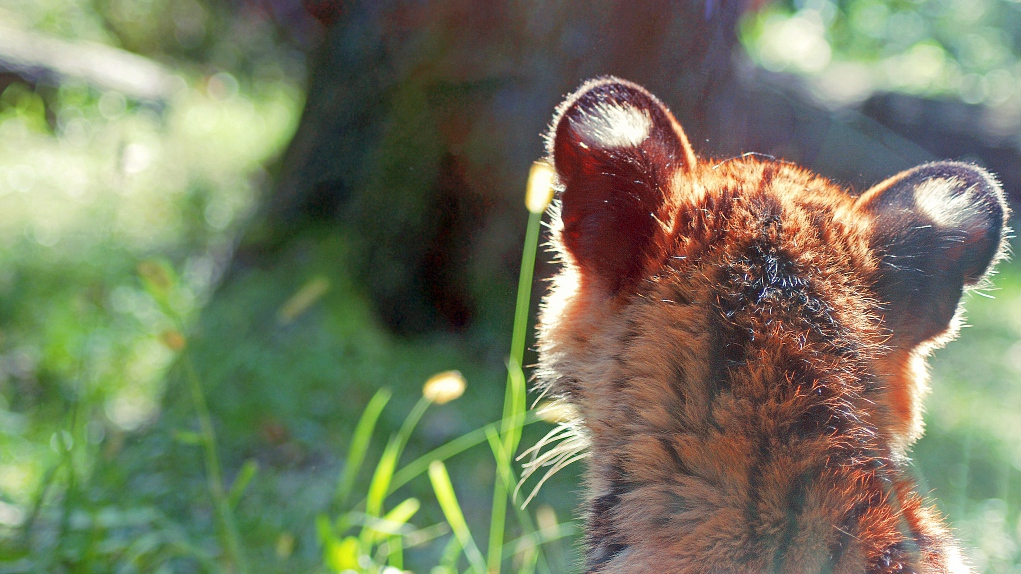
A Bengal tiger recently gave birth to four cubs, including a mutant white tiger, in a wildlife park in Rongcheng City, east China's Shandong Province.
The four tiger cubs were born on May 18, but according to a staff member at Rongcheng Shendiaoshan Wildlife Park, the mother left them almost immediately after birth. Seeing this, the staff took over as the primary caregivers to the cubs.
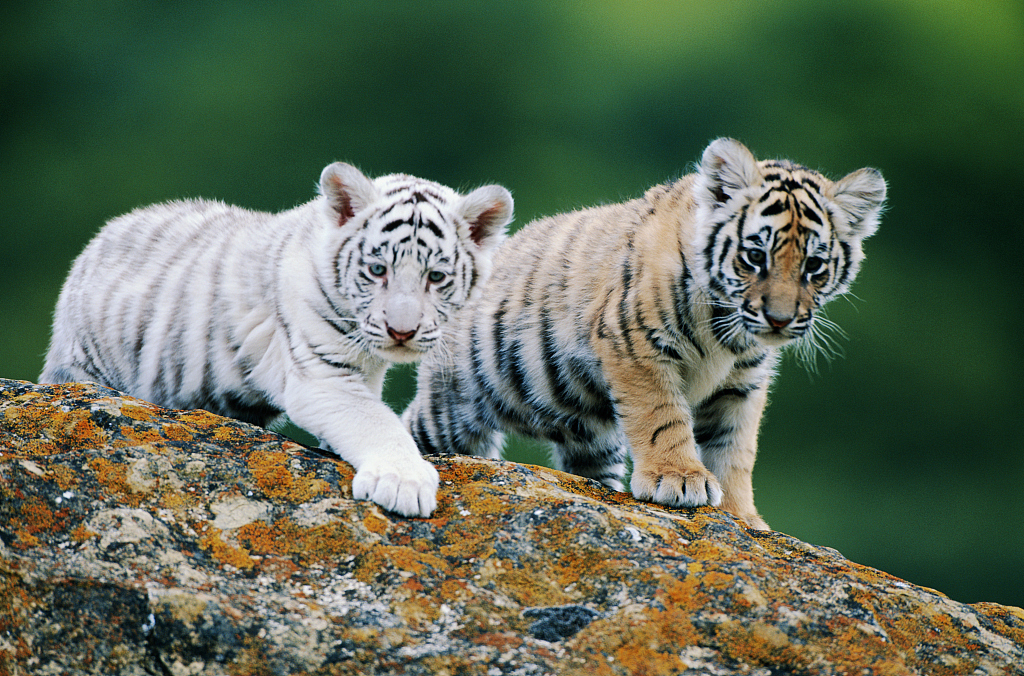
Two Bengal tiger cubs, one is mutant white tiger. /VCG Photo
Two Bengal tiger cubs, one is mutant white tiger. /VCG Photo
"After the four cubs were born, the mother tiger went away without caring at all. The baby tigers were just shaking, with their cries getting weaker and weaker. We saw it and therefore decided to bring them out for bottle feeding," said Meng Qingjia, a veterinarian at the park.
A breeder was sent to specially take care of the cubs, and he feeds them goat milk as a substitute for breast feeding.
"We feed them goat milk once every four hours on a daily basis. When they were first born, they would only need a little bit of milk each time, like 10 to 20 milliliters. We kept adjusting the amount and added more little by little. Now, it's 60 milliliters for each of them at a time," said Meng.
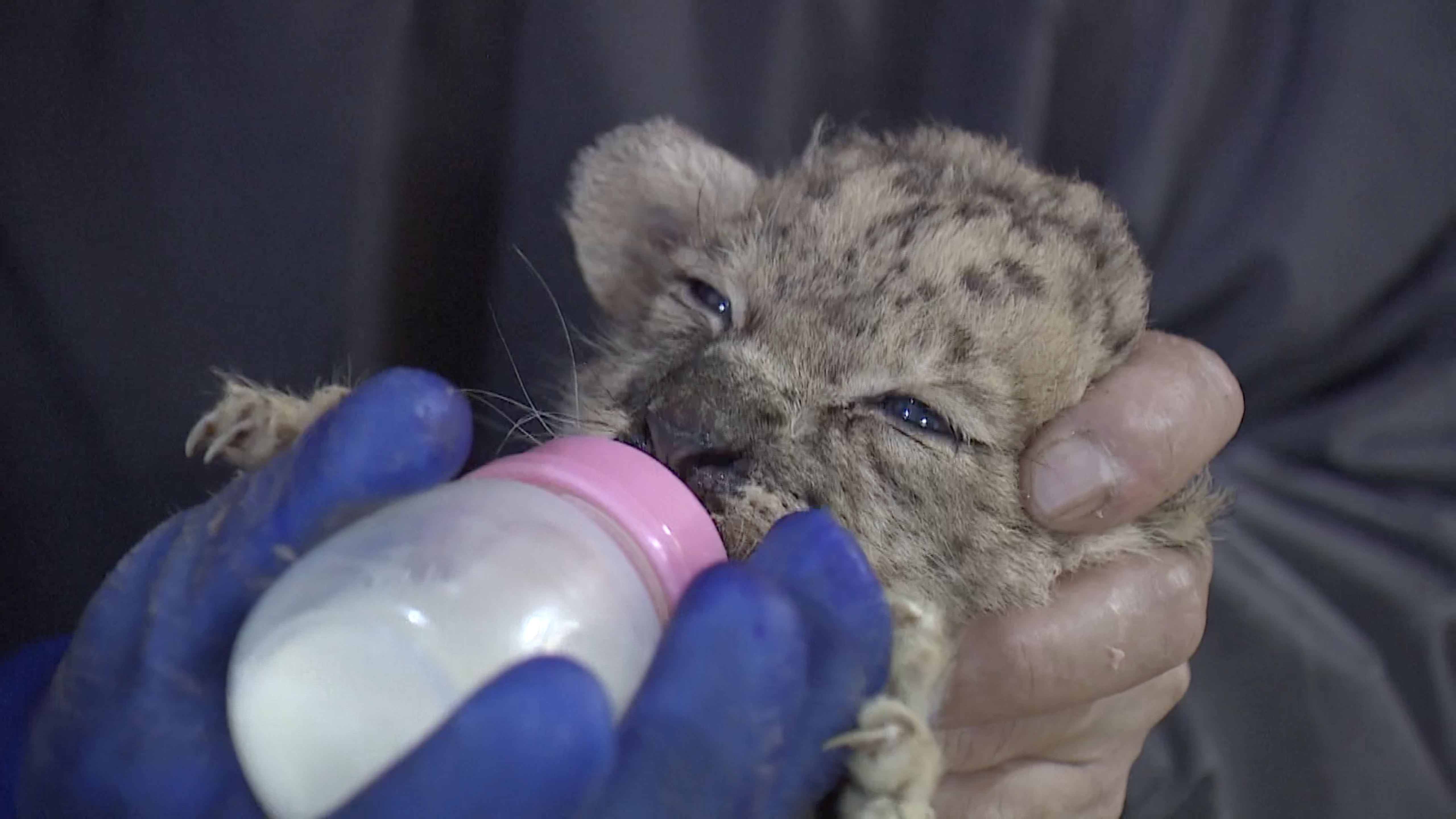
The Bengal tiger cub is enjoying its milk. /Screenshot from the video
The Bengal tiger cub is enjoying its milk. /Screenshot from the video
To meet the nutritional needs of the newborns, breeders have also added a variety of substances to their diet.
"We add some vitamins and electrolytes to the milk powder. We also used to add substances such as digestive enzymes and probiotics when they were younger and tended to get diarrhea," said Meng.
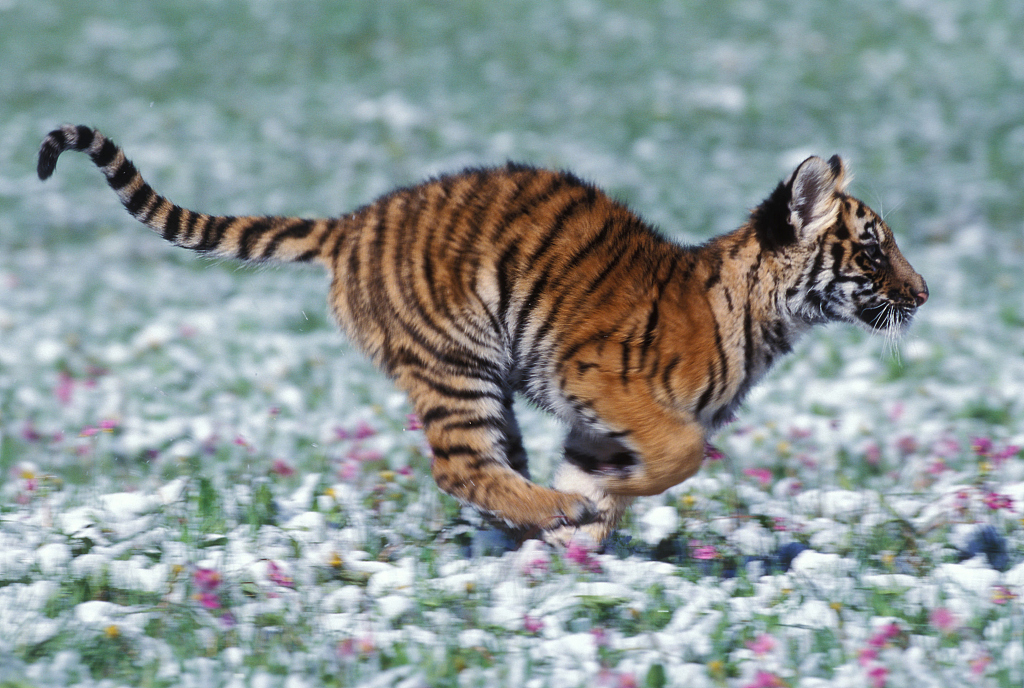
A running Bengal tiger cub. /VCG Photo
A running Bengal tiger cub. /VCG Photo
As for the only white tiger cub among the four, the veterinarian said that white Bengal tigers are a mutation of the species and it is quite rare.
"White tigers are quite rare in the Bengal tiger population. It's not albinism but a result of genetic mutation. Around one in 10,000 Bengal tigers would turn out to be white," he said.
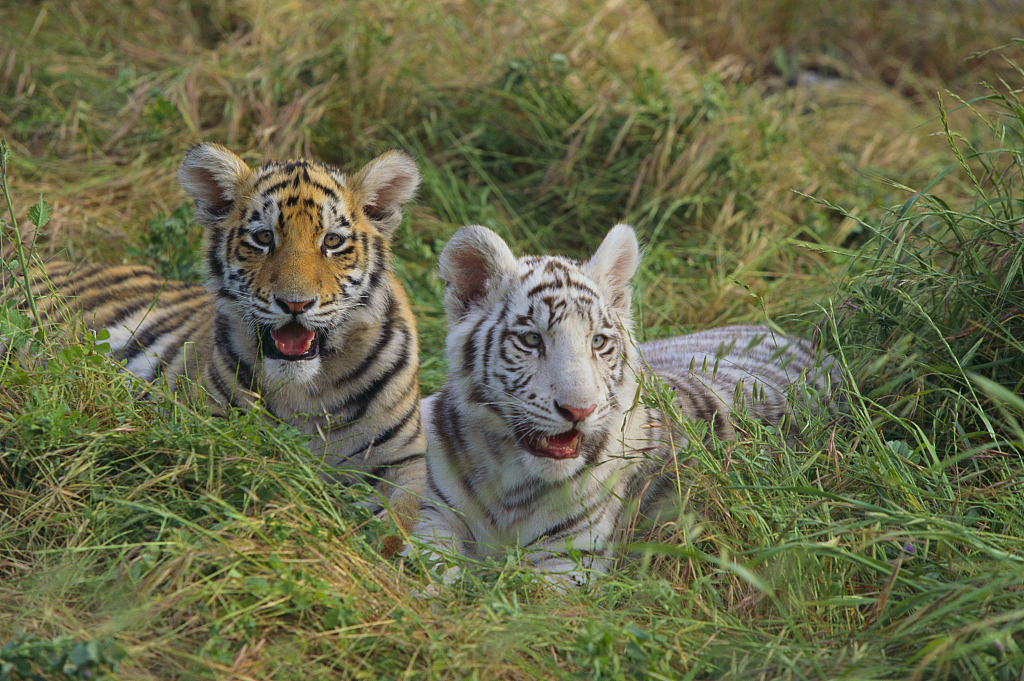
Two Bengal tiger cubs. /VCG Photo
Two Bengal tiger cubs. /VCG Photo
The tiger cubs have been carefully taken care of and are now in good health. They can meet the public after another month of isolated artificial feeding.
(Cover image via VCG)
(If you want to contribute and have specific expertise, please contact us at nature@cgtn.com)

SITEMAP
Copyright © 2018 CGTN. Beijing ICP prepared NO.16065310-3
Copyright © 2018 CGTN. Beijing ICP prepared NO.16065310-3